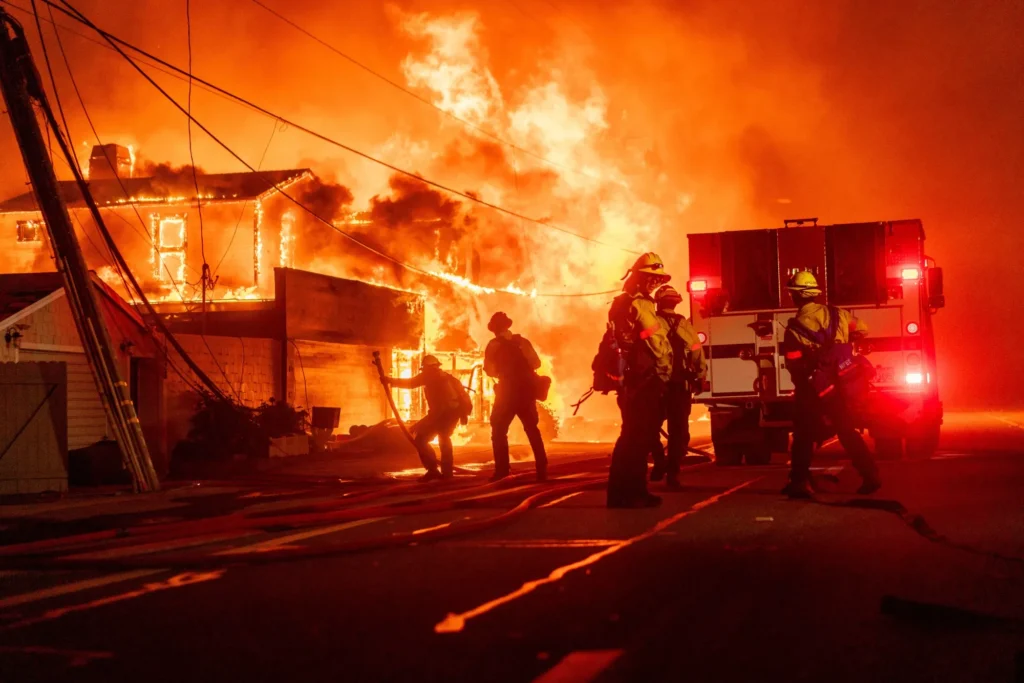
The Palisades Fire, which erupted on January 7, 2025, in the Pacific Palisades neighborhood of Los Angeles, has rapidly escalated into one of the most catastrophic wildfires in the city’s history.
As of January 10, the fire has consumed over 21,000 acres and is only 8% contained, prompting widespread evacuations and causing significant destruction across the region.
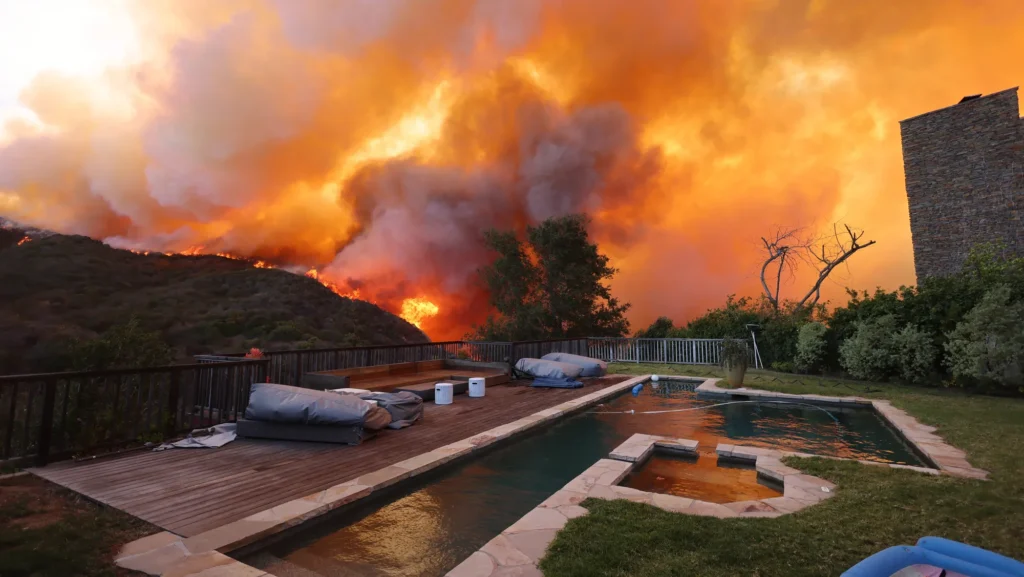
Current Situation
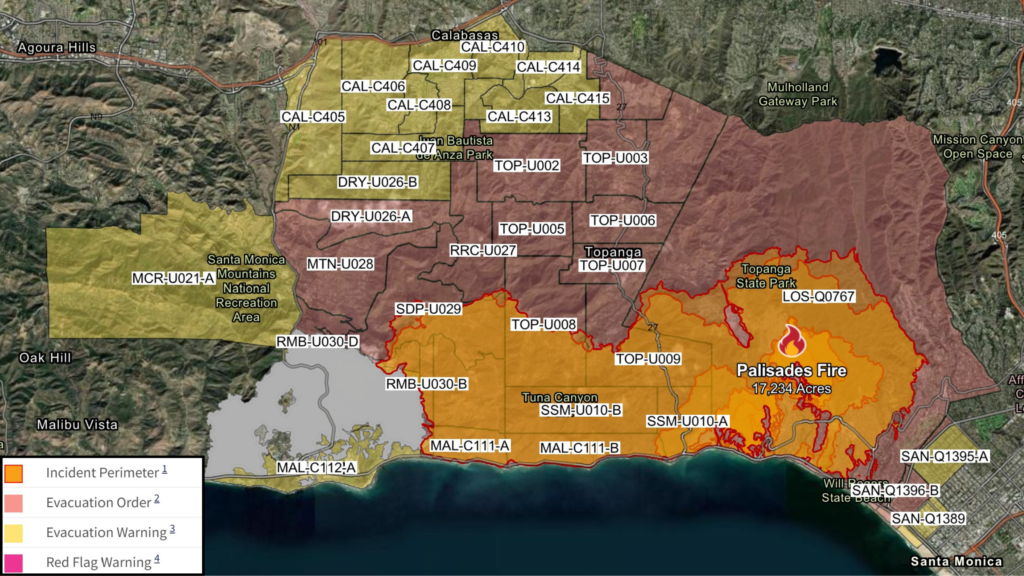
Firefighters are contending with challenging conditions, including low humidity and shifting winds, which have exacerbated the fire’s spread. A Red Flag Warning remains in effect until 6:00 PM today, indicating a high risk of fire danger due to these weather conditions. The Los Angeles Fire Department has expanded evacuation zones to safeguard residents, with over 150,000 individuals already evacuated and an additional 166,000 on standby.
Tragically, the death toll has risen to 11, with thousands of structures destroyed, including homes, schools, and cultural landmarks. The Getty Center is now within the evacuation zone, and the historic Topanga Ranch Motel at Topanga State Park has been lost to the flames.
Impact on the Community
The fire has devastated numerous neighborhoods, leaving residents displaced and communities in mourning. In Malibu, multiple celebrity homes have been damaged or destroyed, highlighting the indiscriminate nature of the disaster. Actor Sebastian Harrison recounted a harrowing escape, hiding behind boulders near his Malibu home as the fire advanced, ultimately losing his property to the blaze.
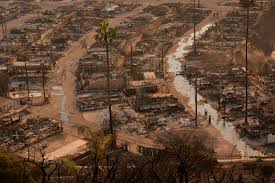
The economic impact is projected to be severe, with insured losses expected to exceed $20 billion. This disaster compounds existing challenges in California’s insurance market, potentially leaving many homeowners without adequate support for rebuilding.
Historical Context
While wildfires are not uncommon in California, the Palisades Fire stands out due to its rapid spread and the extensive damage inflicted in a short period. Historically, urban fires were mitigated by building codes, but rising populations near flammable wildlands and climate change have increased fire risks.
Extreme phenomena, such as droughts followed by dry conditions and strong Santa Ana winds, have played a role in these fires.
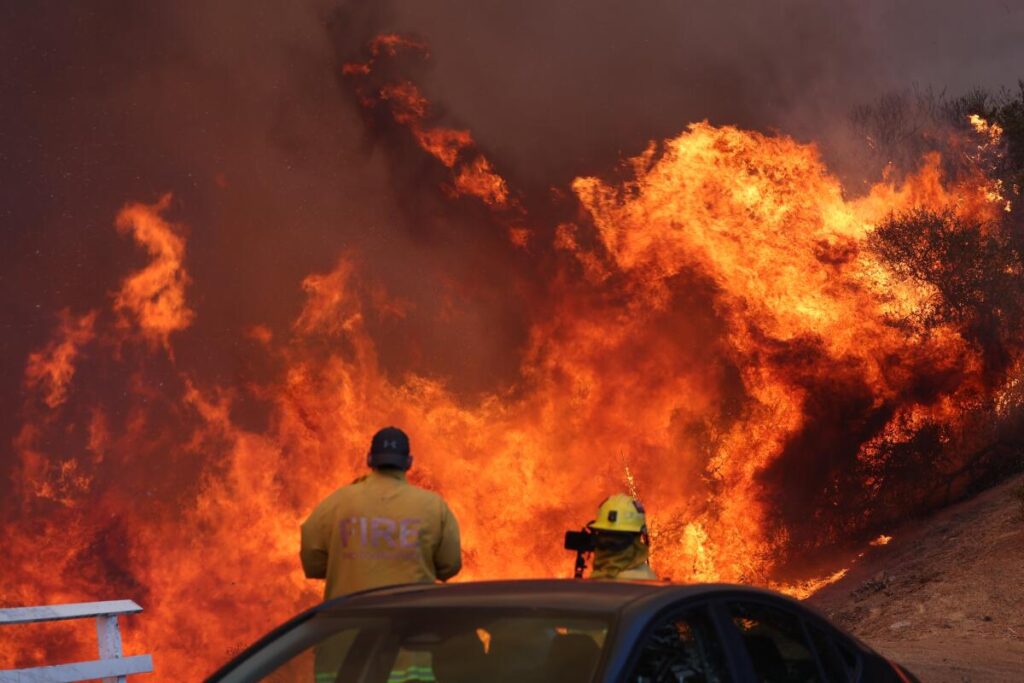
Emergency Response and Community Efforts
In response to the crisis, Governor Gavin Newsom has initiated investigations into infrastructure failures, including issues with fire hydrants running dry, which have hindered firefighting efforts.
President Biden has pledged federal funds for recovery and suggested changes to energy transmission to prevent future fires. Assistance from Mexico and support from the U.S. National Guard are aiding in the relief efforts.
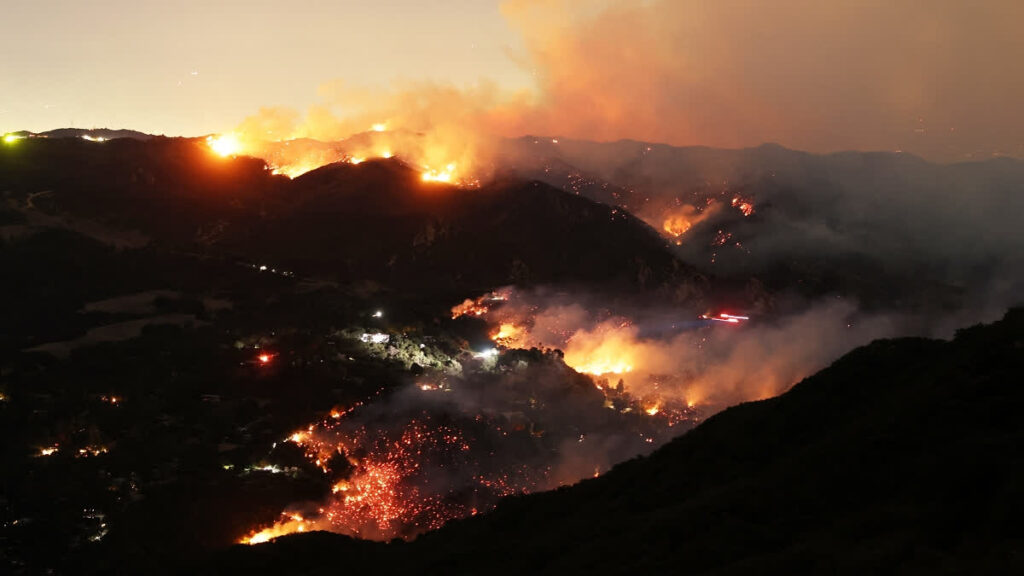
Community members are rallying to support one another, with public figures and citizens making efforts to aid recovery through donations and assistance. Actor Steve Guttenberg emphasized the importance of community solidarity during this crisis, encouraging people to help each other and be kind.
Looking Forward
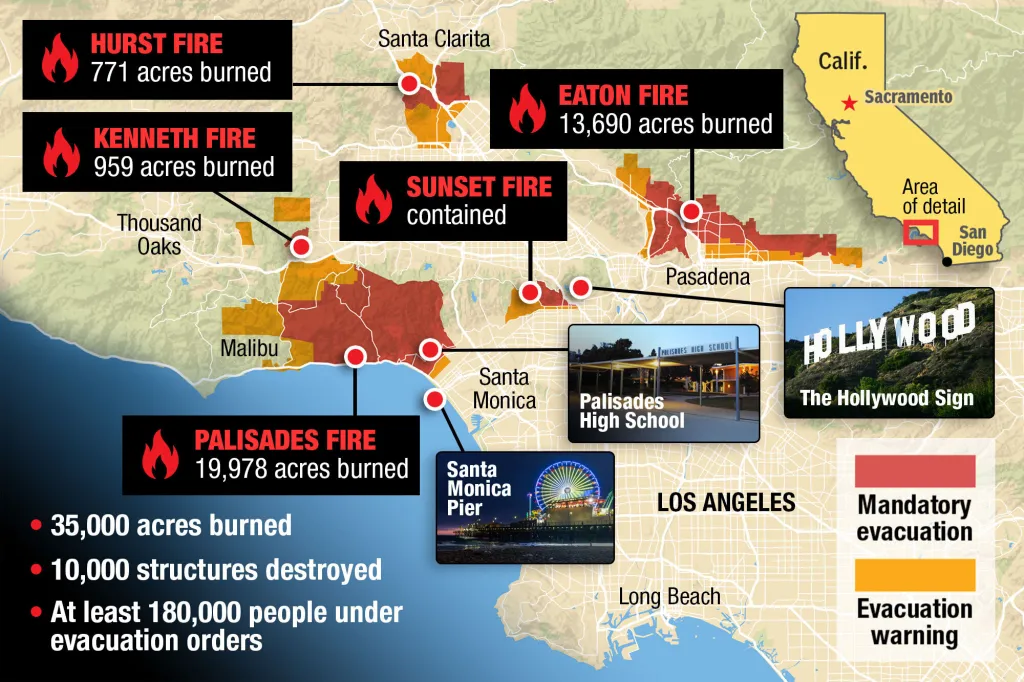
s firefighting efforts continue, authorities urge residents to adhere to evacuation orders and stay informed through official channels. The situation remains volatile, with potential wind increases expected to exacerbate the fire’s spread.
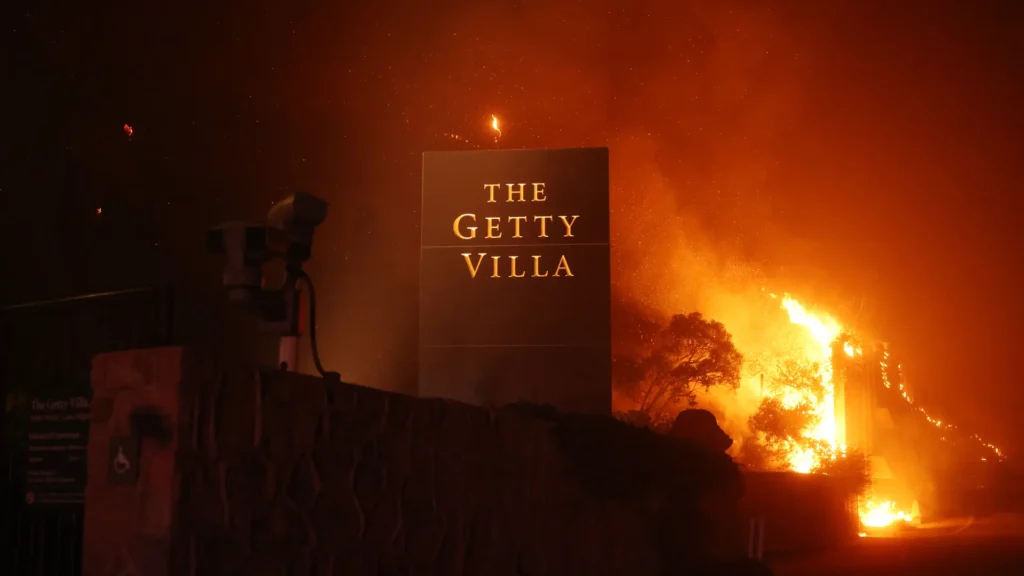
Preventive measures, such as fire-resistant construction and community planning, are being emphasized to mitigate future damage. However, preventing losses entirely under current climate trends is implausible, and rebuilding with enhanced fire safety standards is considered the best way forward.
For a visual overview of the fire’s impact, you can watch the following video:
The Palisades Fire serves as a stark reminder of the growing challenges posed by wildfires in urban areas, underscoring the need for comprehensive strategies to address the underlying factors contributing to such disasters
4 thoughts on “Palisades Fire: Current Situation and Impact on Los Angeles”